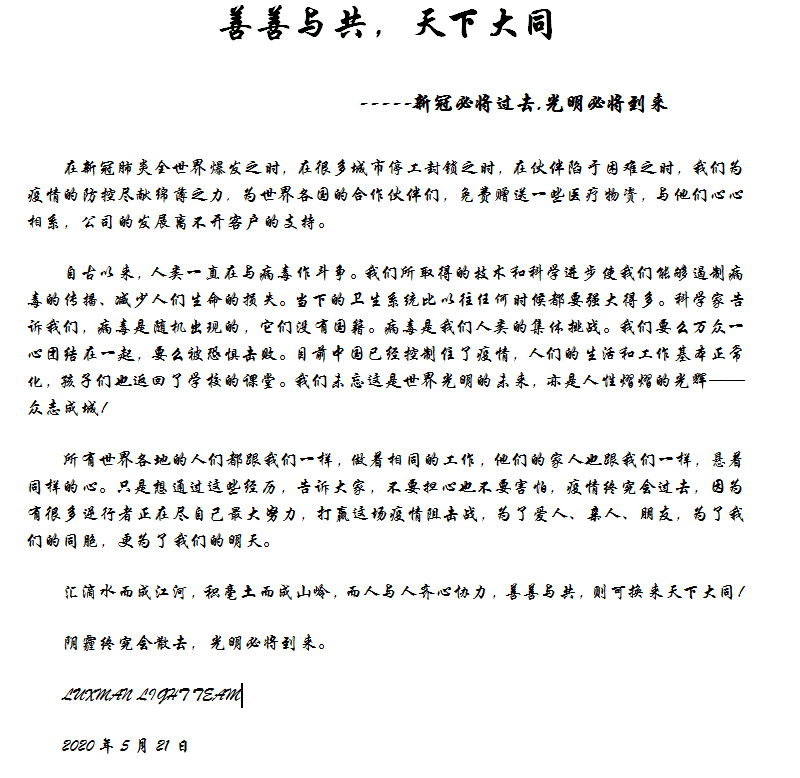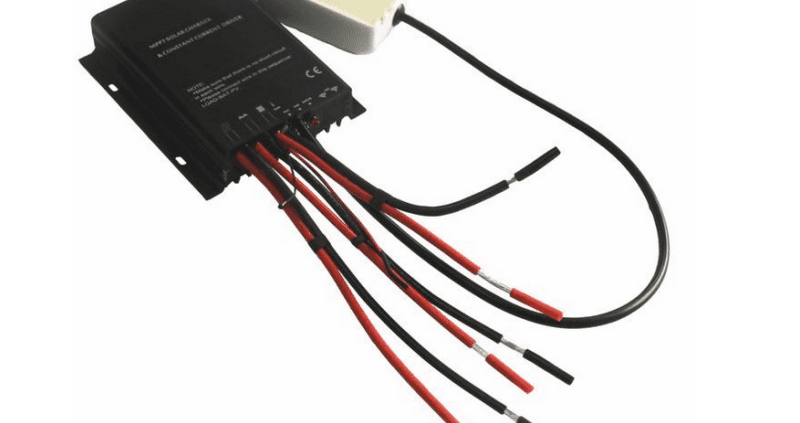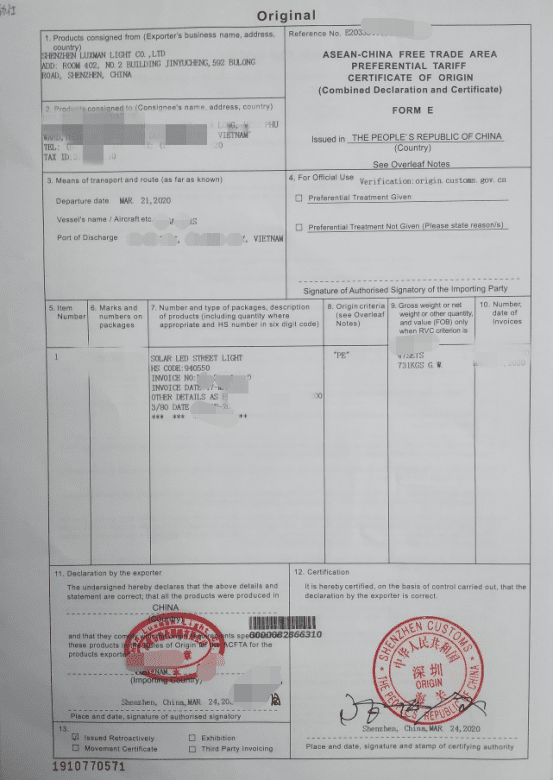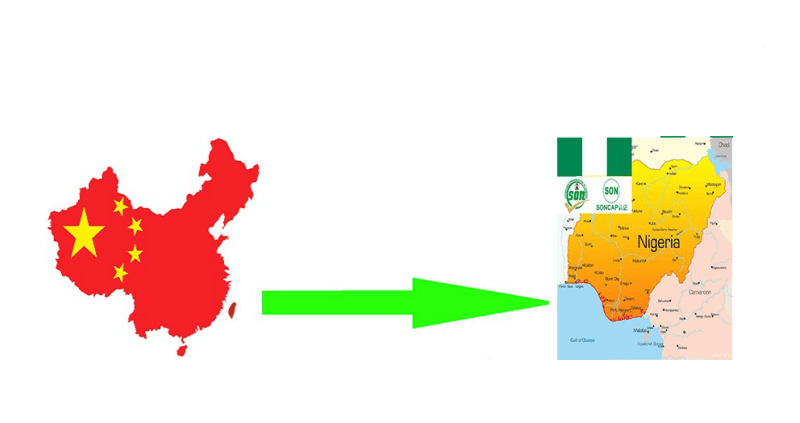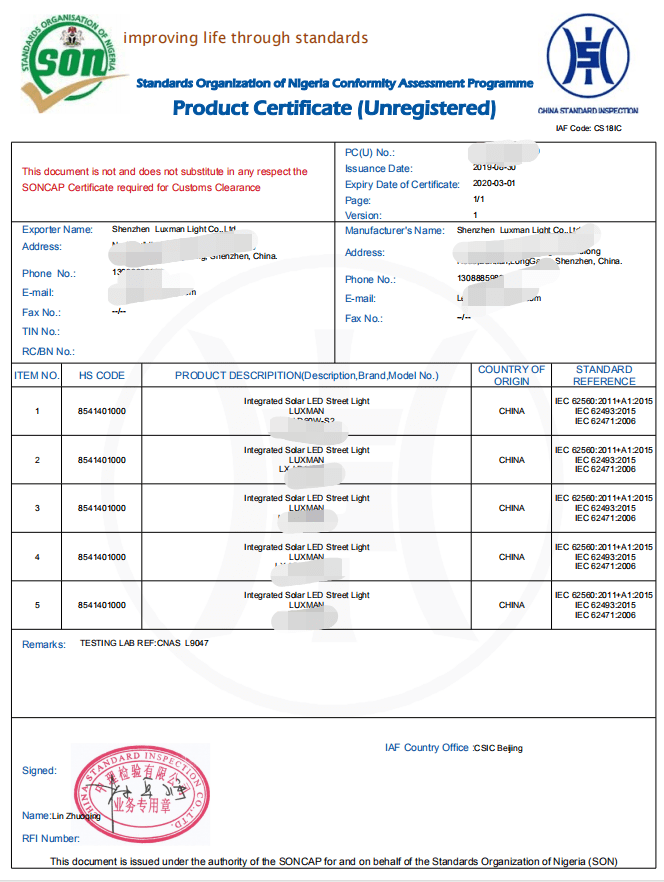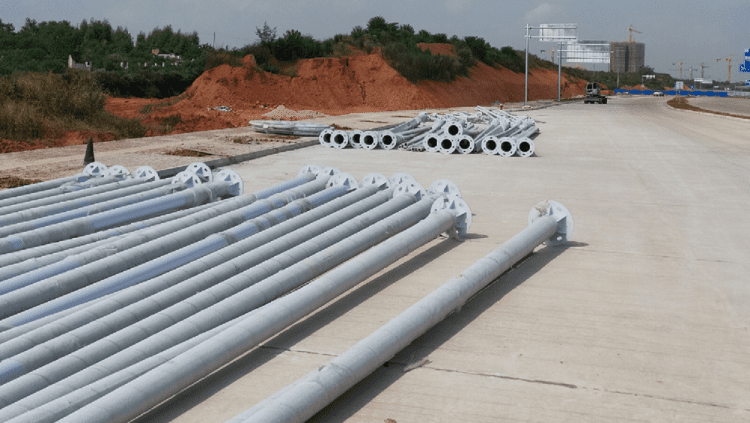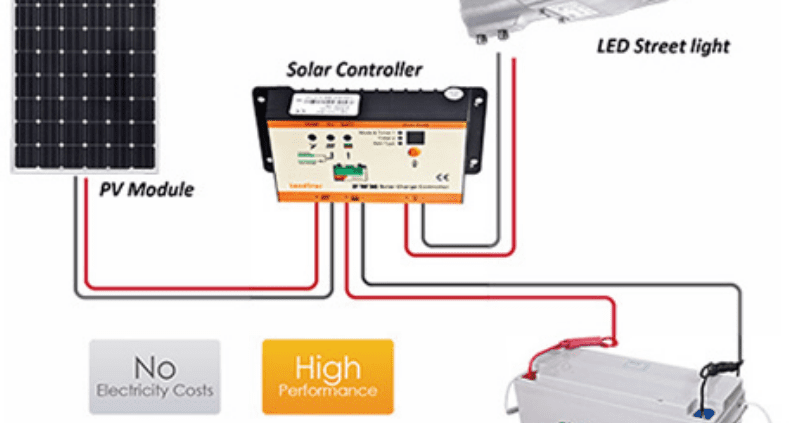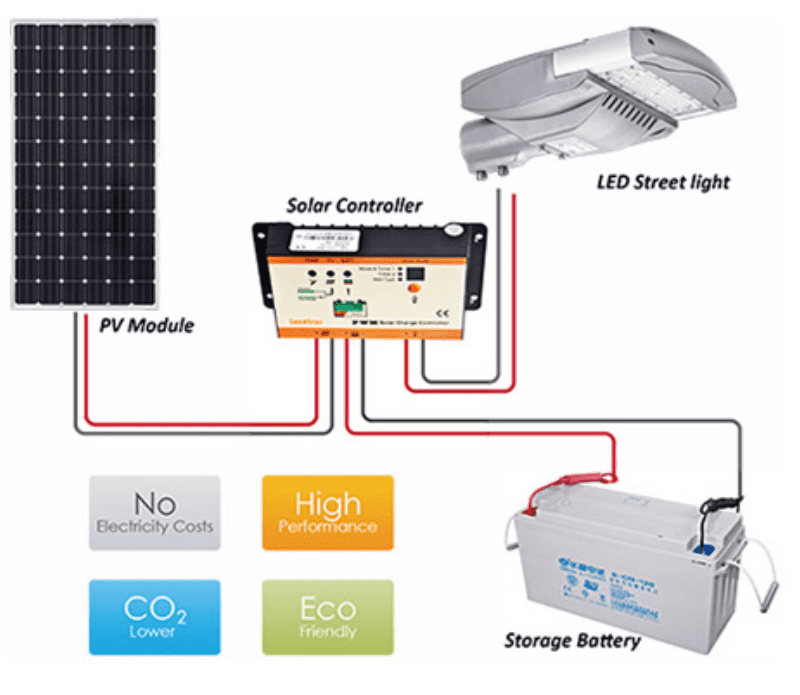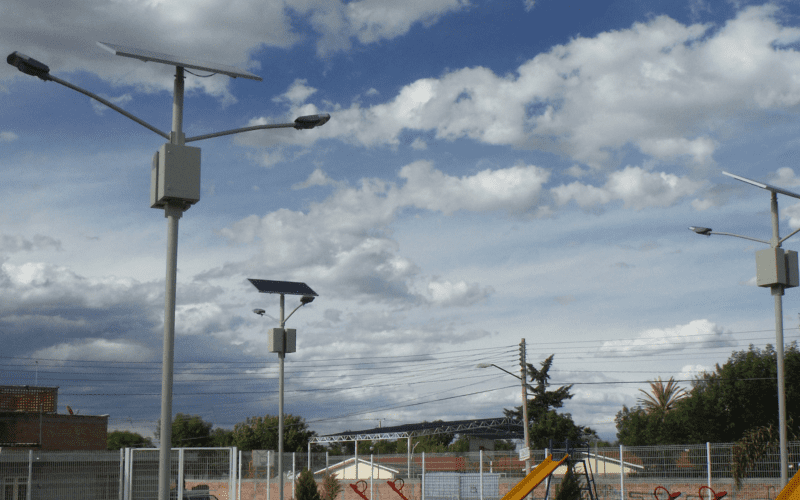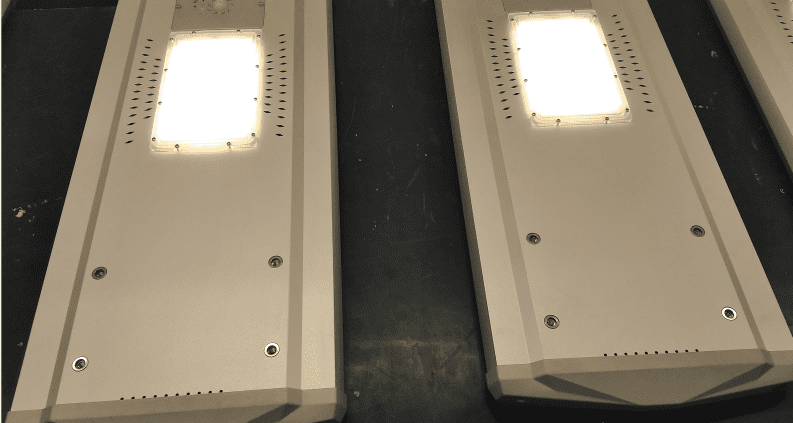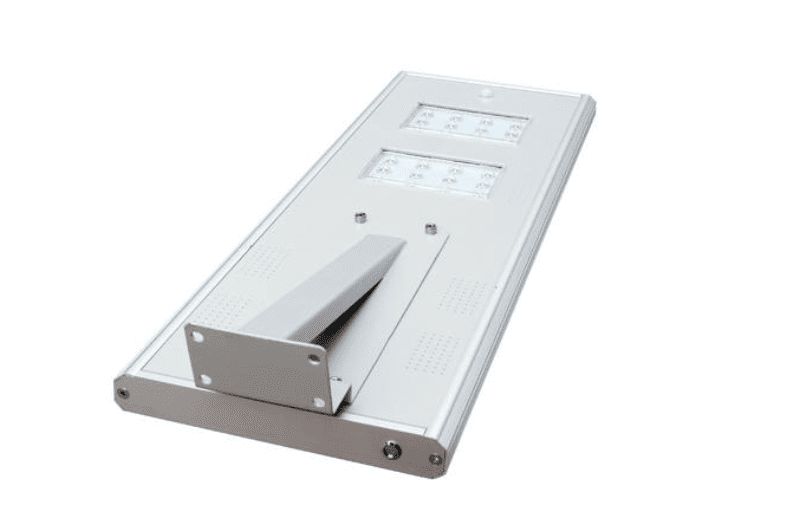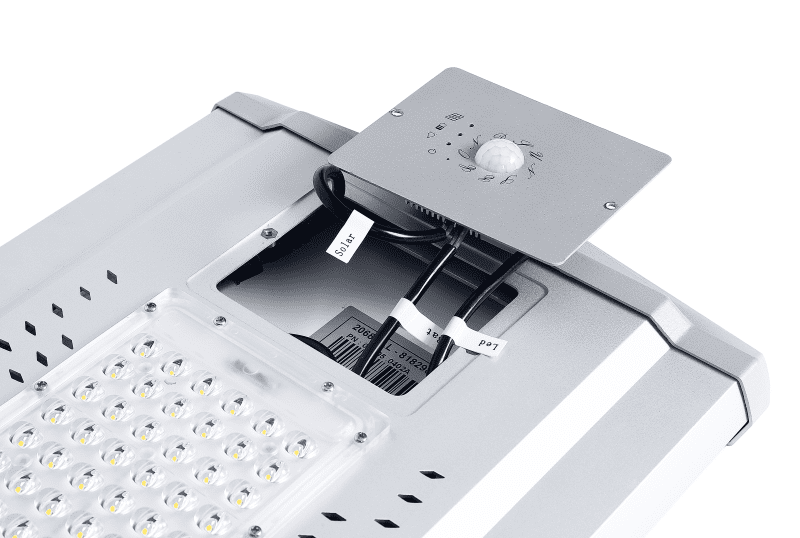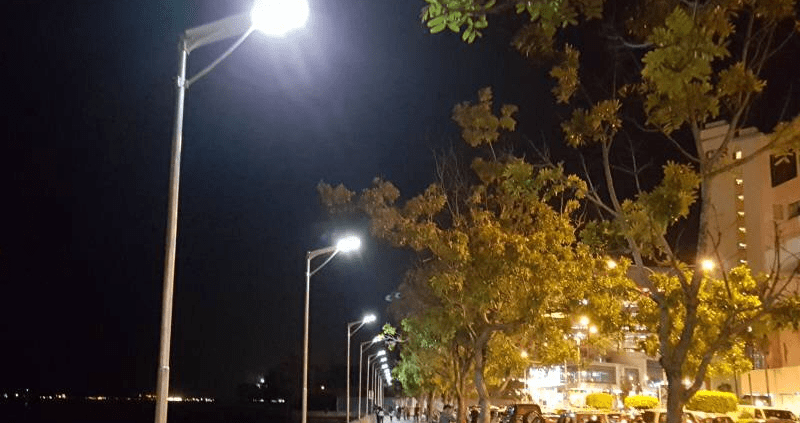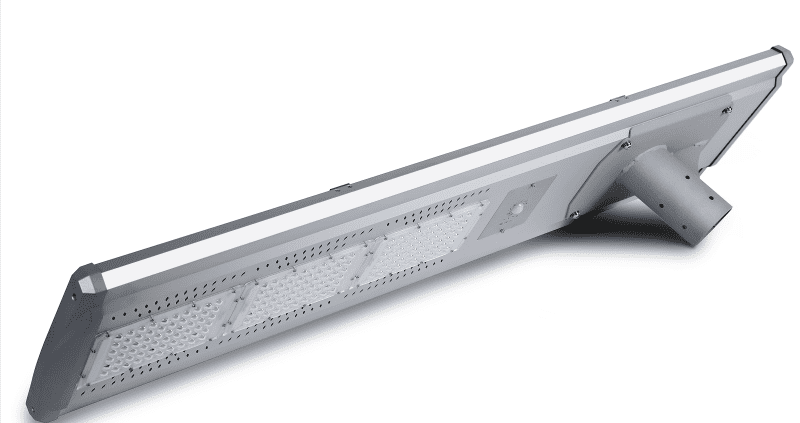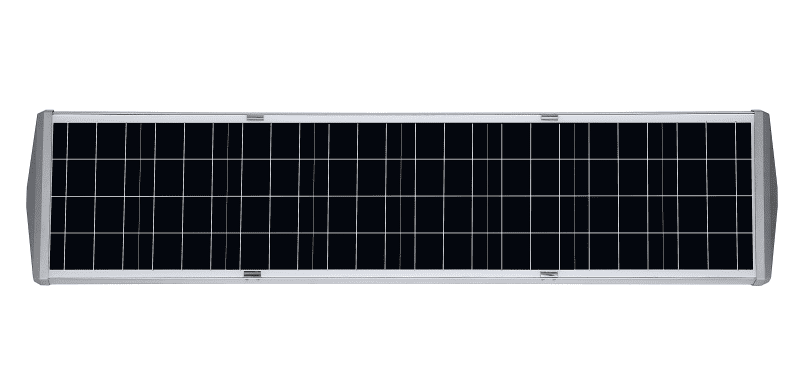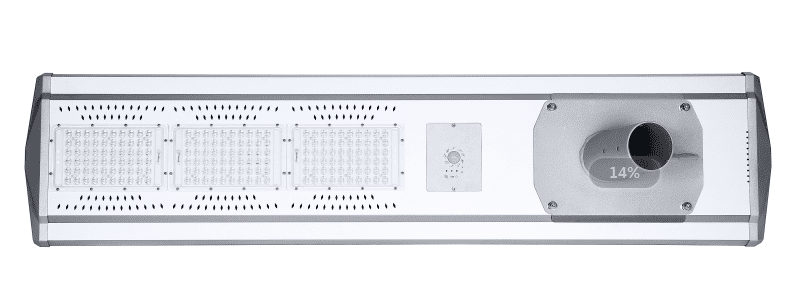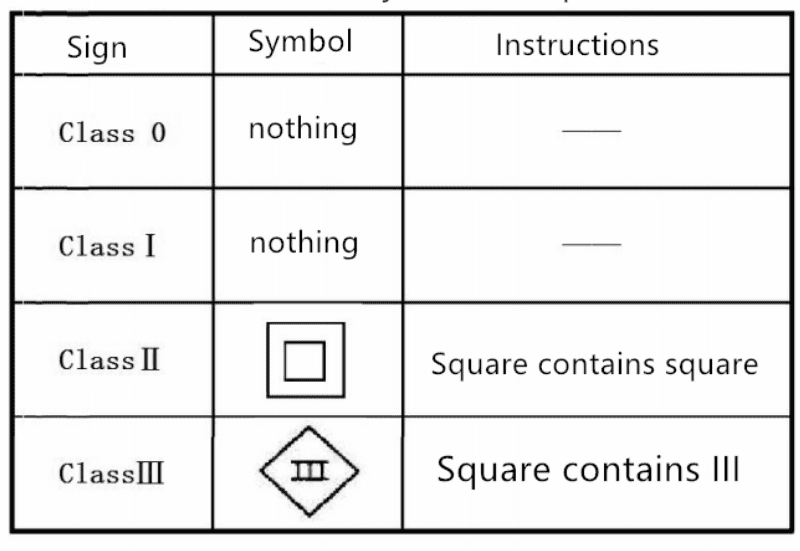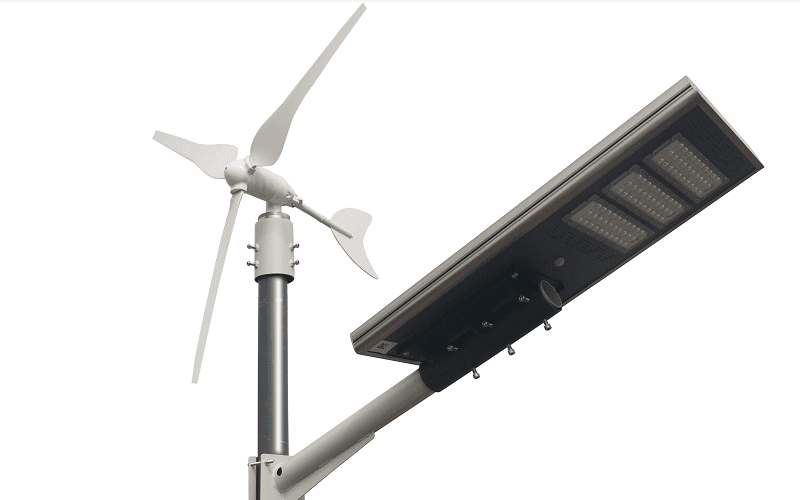The Split-type solar street light is composed of the solar panels (including bracket), lamp head, control box (with the controller, battery, etc.) and lamp pole, foundation, etc. Split-type Solar street lamps generally form their own power supply system and are not connected with the grid network. There are two kinds of solar street lamp system: 12V and 24V.

Solar cell selection
1.Types:
Solar cells convert solar energy into electricity. There are three kinds of more practical solar cells: monocrystalline silicon, polycrystalline silicon, and amorphous silicon.
1) Monocrystalline silicon solar cell performance parameters are relatively stable. It is suitable for use in southern areas where there are more rainy days and less sunlight;
2) Polycrystalline silicon solar cell production process is relatively simple, the price is lower than monocrystalline silicon. It is suitable for use in the East and west areas with sufficient sunlight and good sunshine;
3) Amorphous silicon solar cells have low requirements for sunlight conditions and are suitable for outdoor areas with insufficient sunlight.
2.Working voltage
The working voltage of the solar cell is about 1.5 times the battery voltage, which can guarantee the normal charging of the battery. 8-9v is required for charging 6V battery
For solar cells, 15-18v solar cells are needed to charge 12V batteries. It needs a 33-36v solar cell to charge a 24V battery.
3.Output power WP
The output power per unit area of the solar cells is about 127wp / m2.
Solar cells are generally composed of multiple solar cells in series, and their capacity depends on the total consumption of lighting sources and transmission components.
Power and local solar radiation. The output power of solar cell should be more than 3-5 times of the light source power: when the light is abundant and the lamp is on
The short sunshine area is more than (3-4) times, and vice versa.
4 Average peak sunshine hours H
The output power WP of the solar cell is the 10L standard defined by the European Commission under the standard sunlight conditions, with the radiation intensity of 1000W / m2, The output power of solar cells at atmospheric quality AM1.5 and cell temperature 252c. The output power of the same solar cell is different at different times and different places. The so-called standard conditions are close to the sunshine conditions around noon on a sunny day.
Table 1 sunshine conditions in different regions of China
| Regional division | Rich regions | Relative Rich regions | Available areas | Poor area |
Annual total radiation (KJ/cm2.Year) | ≥580 | 500~580 | 420~500 | ≤420 |
| Region | Western Inner Mongolia, western Gansu, southern Xinjiang, Qinghai Tibet Plateau | Northern Xinjiang, Northeast China, Eastern Inner Mongolia, North China, Northern Shanxi, Ningxia, Gansu, Eastern Qinghai Tibet Plateau, Hainan, Taiwan | Northeast North end, Inner Mongolia Hulun, lower reaches of the Yangtze River, Fujian, Guangdong, Guangxi, Guizhou, Yunnan, Henan, Shaanxi | Parts of Chongqing, Sichuan, Guizhou, Guangxi and Jiangxi |
| Continuous rainy days | 2 | 3 | 7 | 5 |
| Features | Annual sunshine≥3000h Percentage ≥0.75 | Annual sunshine 2400~3000h Percentage 0.6 ~ 0.7 | Annual sunshine 1600 ~2400h Percentage 0.6~ 0.4 | Annual sunshine≤1600h Percentage ≤0.4 |
5. Selection and installation of solar light components.
Generally, Split-type solar street light pole is more than 5m, with a high center of gravity. Most of the solar panels are hanging type, in order to enhance the wind resistance of the whole set of equipment, generally
Select the component power required by the composition of multiple solar panels.

Table-3 annual average sunshine time and optimal installation angle of major cities in China
| City | Latitude | Optimum inclination(0) | Annual average sunshine time(h) | City | Latitude | Optimum inclination(0) | Annual average sunshine time(h) |
| Harbin | 45.68 | +3 | 4.4 | Hangzhou | 30.23 | +3 | 3.42 |
| Changchun | 43.90 | +1 | 4.8 | Nanchang | 28.67 | +2 | 3.81 |
| Shenyang | 41.77 | +1 | 4.6 | Fuzhou | 26.08 | +4 | 3.46 |
| BeiJing | 39.8 | +4 | 5 | Ji’nan | 36.68 | +6 | 4.44 |
| Tianjin | 39.10 | +5 | 4.65 | Zhengzhou | 34.72 | +7 | 4.04 |
| Hohhot | 40.78 | +3 | 5.6 | Wuhan | 30.63 | +7 | 3.80 |
| TaiYuan | 37.78 | +5 | 4.8 | Changsha | 28.20 | +6 | 3.22 |
| Urumqi | 43.78 | +12 | 4.6 | Guangzhou | 23.13 | -7 | 3.52 |
| Xi Ning | 36.75 | +1 | 5.5 | Haikou | 20.03 | +12 | 3.75 |
| Lan Zhou | 36.05 | +8 | 4.4 | Nanning | 22.82 | +5 | 3.54 |
| Yinchuan | 38.48 | +2 | 5.5 | Chengdu | 30.67 | +2 | 2.87 |
| Xi An | 34.30 | +14 | 3.6 | Guiyang | 26.58 | +8 | 2.84 |
| Shang Hai | 31.17 | +3 | 3.8 | Kunming | 25.02 | -8 | 4.26 |
| Nan Jing | 32.00 | +5 | 3.94 | Lhasa | 29.70 | -8 | 6.7 |
Battery selection
The battery stores the power generated by the solar panel when it is illuminated, and then releases it when it needs lighting at night.
The Split-type solar street light system with battery is mainly discussed
Type selection
1) Lead-acid (CS) battery: suitable for low- temperature high rate discharge, low specific energy, most of the current Split-type solar street light. Maintenance- free sealing,The price is low. Pay attention to prevent lead-acid pollution, which should be phased out.
2) Nickel cadmium (Ni Cd) battery: high discharge rate, good low- temperature performance, long cycle life, small system. Pay attention to prevent cadmium pollution.
3) Ni-H battery: high rate discharge, good low- temperature performance, low price, pollution-free, green and environmental protection battery. Small system.
4) Lithium battery: small size, good temperature performance, no pollution, long life.
At present, lead-acid maintenance-free battery, ordinary lead-acid battery and alkaline nickel-cadmium battery are used less and less due to environmental protection and volume reasons. People tend to use more compact design lithium battery, especially the stable and long-life lithium iron phosphate battery.
Capacity selection
The capacity of the battery is too small to meet the needs of lighting at night, if the capacity is too large, the battery is always in a state of power loss, which affects the battery life,
It also causes waste. The ratio of battery capacity (ah) to load capacity (ah) should be more than 3-6 times: in areas with less days of continuous rainy days, it should be more than 3-4 times
It is 5-6 times more than that in rainy days.
Battery connection
When connecting in parallel, the unbalanced effect of each cell should be considered. The number of parallel groups should not exceed
Pay attention to battery anti-theft.

Controller
The operation of solar street lamp is controlled by controller. Most controllers realize intelligent control. The controller shall have the following functions:
1.Street lamp control
Light control, time control, temperature control and other functions are available. With dimming (or midnight lights) function
2.Battery management
Limit the charging and discharging conditions of the battery to extend its service life:
1) Anti reverse charging control:
2) Anti overcharge control:
3) Anti over discharge control;
4) Temperature compensation.
Automatic protection
Solar cell reverse connection protection, battery reverse connection protection, battery open circuit protection, anti reverse charging protection at night, output short circuit protection, etc.
Indicator light display
Display the working status of main components of solar street lamp: battery, solar cell, LED lamp, etc.
Controller voltage
Controller voltage = battery voltage.
Tilt angle design of solar cell
The solar cell angle inclination refers to the angle between the solar panel plane to the horizontal ground.
The inclination angle of solar cell module (which refers to the angle between the plane of solar cell and the ground plane) has been discussed in many technical circles. Tilt angle according to location.
Set (latitude, etc.) to determine; the front of the solar panel is facing the sun (or South slightly West), and the inclination angle is consistent with the local latitude. If conditions permit·
The tilt angle of solar panel can be adjusted according to the season.
Refer to “table-3” for the installation angle of solar cells in major cities in China.
Wind resistant design of Solar street lamp
wind resistant design of Solar cell module
According to the maximum wind power, the wind resistance design of olar street lamp is carried out:
Table 4 corresponding relationship between wind force and wind speed
| Nom | Maximum wind speed(m/s) | Wind force (grade) | Nom | Maximum wind speed(m/s) | Wind force (grade) |
| Tropical depression(TD) | 10.8 ~17.1 | 6~7(Bottom center) | Typhoon(TY) | 32.7 ~ 41.4 | 12 ~13 |
| tropical storm(TS) | 2 ~24.4 | 8~9 | violent typhoon(STY) | 41.5 ~ 50.9 | 14 ~15 |
| Strong tropical storm(STS) | 24.5 ~ 32.6 | 10 ~11 | Super typhoon(Super TY) | >51.0 | ≥16 |
Note: from “GB / T 19201-2006”
There are more typhoons in the south of China. The solar street lamp pole should be able to resist at least grade 12 typhoons, and most areas in the North should be able to resist grade 10 gales.
Wind resistance design of street lamp pole

1) Solar module: the manufacturer shall ensure that it can withstand the local wind speed without damage, with the emphasis on the connection between the battery module bracket and the light pole.
2) Lighting pole and foundation; wind resistance design of street lamp pole and foundation and height, area, inclination angle, pole structure, local maximum wind speed, etc. of battery board
Relevant, the calculation and design shall be carried out by the lamp pole manufacturer or structural discipline to ensure the stability of the Split-type solar street light pole at the maximum wind speed.
Main light source and application of solar lighting
There are two forms of light source and solar energy system:
HID lamp
1) Solar powered HID lamp electronic ballast (or trigger, the same below). )In fact, it is a DC / AC high-value converter. Therefore, the Split-type solar street lighting system generally does not need additional DC / AC inverter to reduce the circuit loss. This form is suitable for the new solar street lamp project.
2) Equipped with traditional HID lamp electronic ballast: connected to AC220 mains power supply. Its electronic ballast is essentially AC / DC / AC high-frequency converter. If it is connected with solar energy system, DC / AC small power inverter shall be added between battery and hid lamp electronic ballast. This form is suitable for street lamp reconstruction.
LED lamp
Solar powered street light does not need additional DC / AC inverter to reduce the circuit loss too, it allows up to 65% energy savings than conventional solar street light.
Application: low power solar LED lamps are used in residential or commercial areas, such as 5W / 10W / 15W / 25W / 30W, etc. High power solar street lamps are generally used in industrial parks and road lighting, such as 40W / 60W / 80W / 100W / 120W.
Lightning protection and grounding
Safety voltage
The solar street lamp generally uses dcl2v or DC24V. It is a safe voltage and does not do electrical protection grounding
Lightning protection and grounding
1) Street lamps and solar panels shall not be used as lightning arresters;
2) Use metal lamp post as lightning arrester and downlead:
3) When the reinforcement cage of street lamp foundation is below -0.50m and the surface area of reinforcement is more than 0.37m2, it can be used as lightning protection grounding body. Otherwise, the artificial grounding electrode shall be added, with the grounding resistance ≤ 10 Ω. If necessary, connect the grounding body. The grounding method is the same as that of general street lamp
4) TVs (transient voltage suppression) lightning protection is set in the street lamp controller
Design example
Split LED solar street lights are to be installed on a pavement in Shanghai. The lamp is 5 meters high, the street lamp input voltage is 24V, the power is 70W, the work is 8.5h every day, to ensure the continuous rainy days 7 days to provide lighting.
Try the Split-type solar street light design.
1 solar cell selection
1) average annual sunshine time in Shanghai: check “table — 1” : 3.8h.
2) daily electricity consumption of street lamps:
(70/24) * 8.5 = 24.79 (Ah)
3) total charging current of battery:
(24.79 *1.05)/(3.8*0.85)=8.06(A)
1.05 is the comprehensive loss coefficient of the solar cell module system, and o. 85 is the charging efficiency of the battery.
4) total power of solar cells
8.06 * 31.17 = 251.23 (W)
Choose 2pcs Pm=135W solar panels in parallel. The best working voltage is 34.8V. Optimal operating current 3.88A. The component size is 800*1580*50mm
2.Battery selection
Battery capacity: 8.06*(7+1)=64.48(Ah)
Choose a maintenance-free DC24V – 70Ah lead-acid battery.
3.The controller
Select the intelligent controller. According to the requirements of Shanghai street lamp system, adjust the controller parameters and protect the street lamp batter
4. Angle of solar cell
Check “table — 1”, dip Angle of solar cells in Shanghai:
31.170+30=34.170
The direction of the solar pack is due south slightly to the west, with a horizon dip Angle of 34.170
5.Wind resistance design of lamp post
As far as possible to use solar street lamp sets of products, by the manufacturer to provide qualified supporting anti-wind lamppost material and basic drawings, or by the structure of professional technical personnel according to the local climate conditions of the lamp poles and foundation anti-wind design or verification.
Article connexe :
https://luxmanlight.com/how-to-choose-batteries-for-your-solar-street-light-project/
